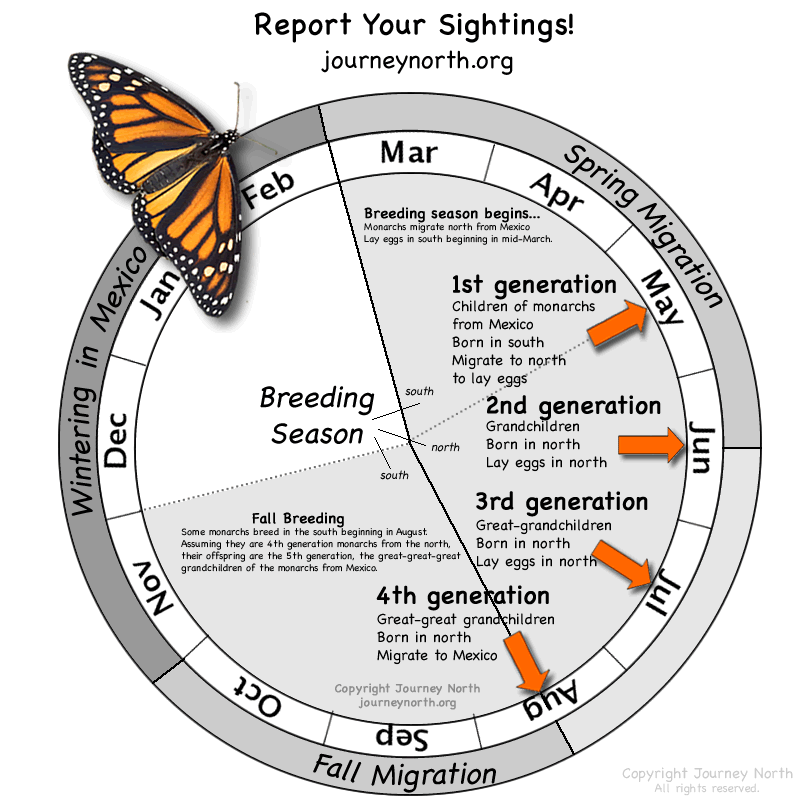By Elizabeth Howard
| Please Report Your Sightings! |
Migration enters Texas! The monarch parade began on Sunday and continued all week. What will this latest-ever arrival mean for spring production?

Bill Jarvis San Antonio, Texas March 29, 2015
It was clear on Sunday that the first migrants had finally reached Texas. People suddenly saw monarchs with torn and faded wings, flying northward, laying eggs, or stopping to drink or rest.
The wave of arrival continued all week. Simultaneous sightings of multiple monarchs mean the butterflies were moving en masse.
Late Arrival
Outlook for Recovery
|
|
Special thanks to Dr. Karen Oberhauser for sharing her knowledge and expertise with Journey North participants. |
 |
|
 |
 |
 |
 |
| What to Report | First Adult report | map | list |
Milkweed report | map | list |
 |
 |
 |
| First Egg report | map | list |
First Larvae report | map | list |
Other Observations report | map | list |
| Journal | |





